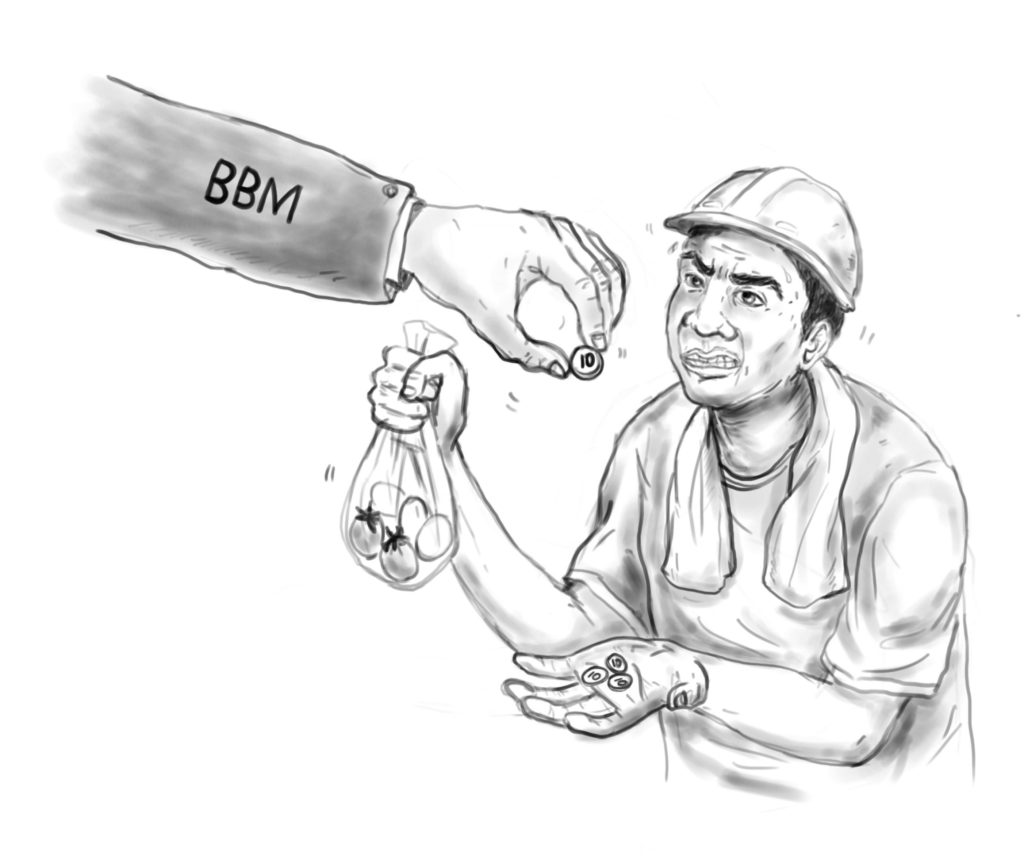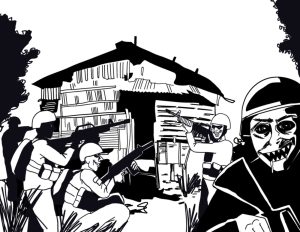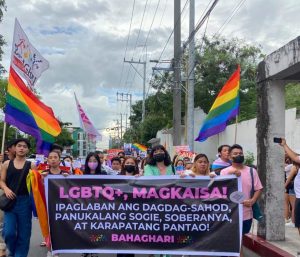Mindanao workers suffer from measly wages


Outside the National Capital Region, the Regional Tripartite Wages and Productivity Boards (RTWPB) have yet to act on the workers’ petition for wage increase. Proposals are still pending in 10 RTWPBs.
The RTWPBs last ordered increases in daily wages way back in June 2022. Of these, ₱16 (BARMM) got the lowest increase while Region VI ordered the largest increase (₱110) to be implemented in the two tranches. Most regions implemented only a ₱30-₱60 increase. The NCR minimum wage is set higher at ₱533-₱570.
In Mindanao, the average minimum wage is at ₱357.83 to ₱376.33. Workers in the Davao region receive the highest amount at ₱443. This is a far cry from the island’s average living wage set at ₱1,315/day in April. To reach the living wage, an increase of up to ₱938.67 is needed islandwide.
State statistics in January recorded that Mindanao hosts more than 23% of the labor force (population aged 15 and over) or 17.82 million out of a total of 77.12 million in the country. Of this number, the labor force participation rate was pegged at 68.2%. During the same period, the unemployment rate was pegged at a low average of 3.9% while underemployment in the island was at 17.5%.
A 2017 study found that one in five workers in Mindanao was looking for extra work, but most work is either temporary or part-time. About 90% of the workforce is in the informal sector, mostly in agriculture. The island’s economy is starkly non-industrial, even in comparison with the backwardness of most parts of the country. In 2018, there were only 153,369 manufacturing workers, of which 50,522 were sub-contract workers. More than 364,000 were employed in transportation and storage, wholesale and retail, and electricity and gas related businesses.
Meanwhile, the number of workers in the 72 mining and quarrying companies recorded then was at 24,025. Mine workers were most concentrated (19,482) in the Caraga region where 54% of workers are contractual. Currently, the daily wage of workers in the region is pegged at ₱350.
In June, the workers’ union in Philsaga Mining Corp. (PMC), a gold mining company, succeeded in negotiating a ₱40 wage increase in their collective bargaining with the management. The company employs 2,050 regular workers and allocates a meager ₱82,000 per month in additional wages. According to the Mines and Geosciences Bureau Region 13 in 2022, the company had an estimated 5,040 employees and spent only ₱692 million for wages, a small amount compared to the amount of gold ($137.51 million) and silver ($779,123) which it exported in the same period.
In the factories and plantations of the Dolefil company in South Cotabato, only about 7,000 of the 20,000 workers are regular and receive the Socsksargen minimum wage of ₱341/day. Majority of workers, employed as contractuals, receive 8% less. Dolefil is one of the largest exporters of fruit products in the world and in 2021 earned up to $6.5 billion.
Dolefil plantations are only a small part of the nearly 500,000 hectares of land or 12% of Mindanao’s total agricultural land occupied by plantation companies.
In addition, there are at least 37 economic zones on the island. Of these, 17 are in Davao Region and 10 are in Northern Mindanao. There are 12 agro-industrial zones, 15 information technology parks, and eight manufacturing zones. Most of the workers here earn less than the minimum wage and face various attacks on their labor rights.
Recently, the regions in Mindanao recorded an average of 7.2% gross regional domestic product (GRDP). However, this is not felt by the people. In 2021, poverty incidence in Mindanao (21.93%) was twice worse compared to Luzon (10.52%).












